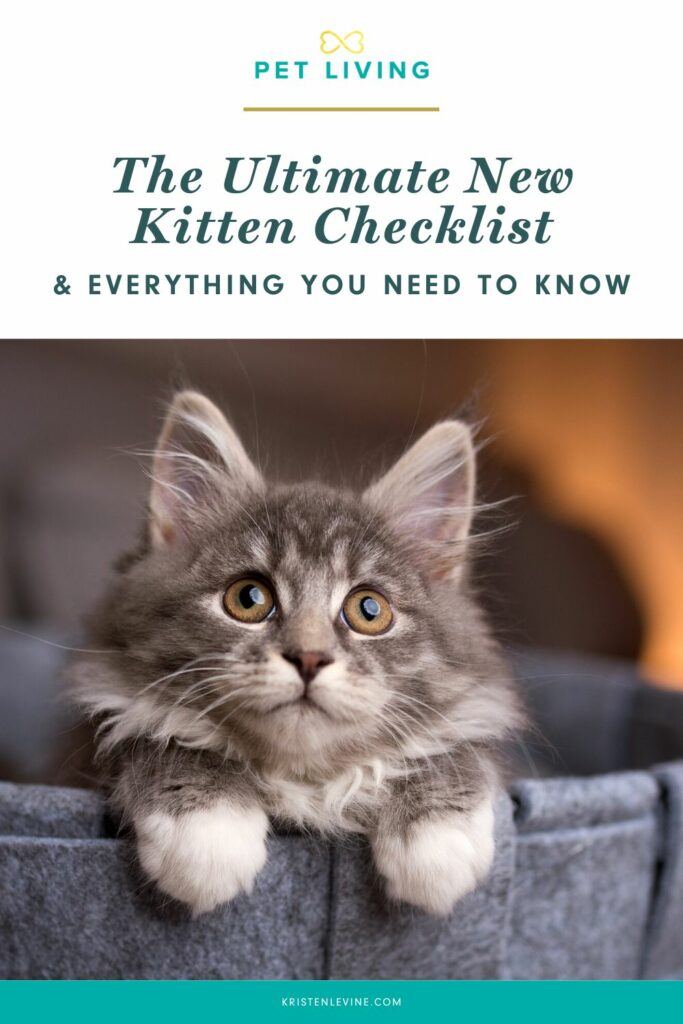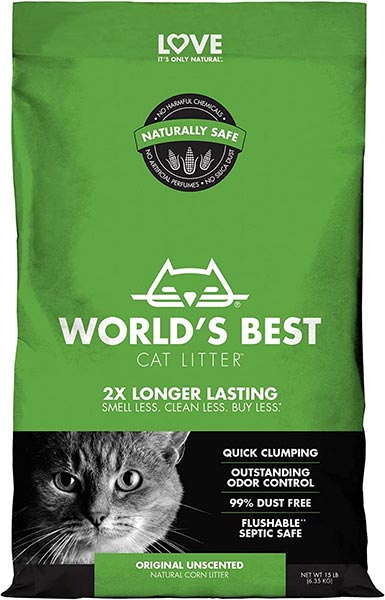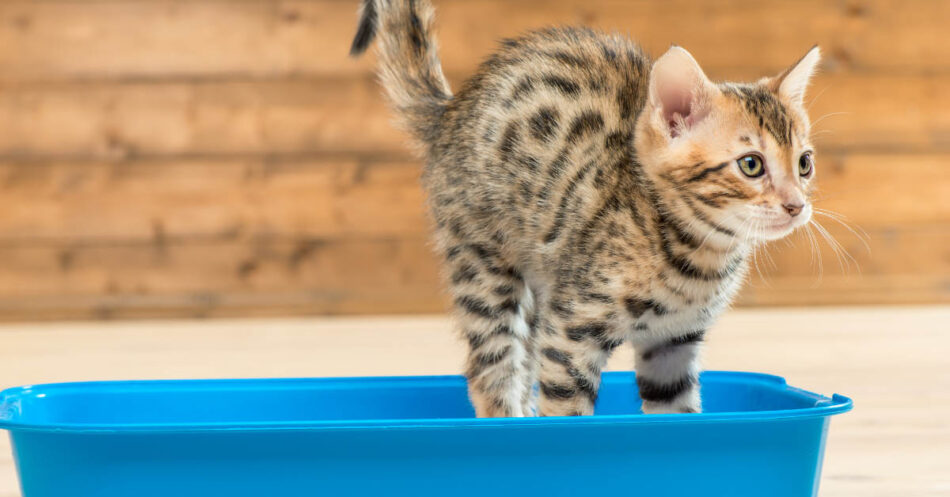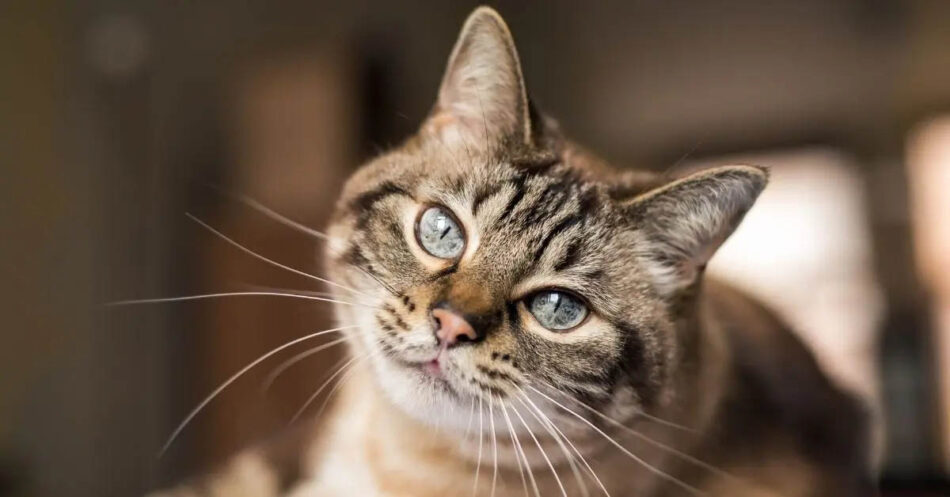
The Ultimate New Kitten Checklist and Everything You Need to Know
This post may include affiliate links. Please read my disclosure policy.
Bringing home a new kitten is exciting! Those little balls of floof with their tiny purrs and sweet toe beans are nearly irresistible.
But with great joy comes great responsibility. Adding a new addition to your fur family is no small feat, but bringing home your new kitten will be a breeze with the right preparation.
Here’s everything you need to know.

How To Prepare Before Bringing Home a New Kitten – Get The Right Kitten Essentials.
Before bringing home a new baby cat, it’s essential to take time to prepare for their arrival. The first several months will be full of firsts and adjustments for you and your new cat. So the better prepared you are, the more time you can spend playing and cuddling instead of worrying.
So go through this new kitten checklist and ensure you have these items on hand before bringing home your new feline friend:
Cat Food
he proper food and nutrition are critical to getting your new cat off to a good start as they continue to grow and develop. If you’ve adopted your kitty from a shelter, start by feeding them whatever kitten food they were eating before you brought them home. Sudden changes in diet can lead to an upset stomach and an upset kitten!
Once you’re settled at home, consult your veterinarian for suggestions about kitten food. Whether you choose dry or wet food is a personal choice, as each has its pros and cons. Just be sure the cat food is made from quality ingredients to fuel your cat during their important growth stages. Be sure to prepare durable food and water bowls for your kitten as well, but remember that her food and water bowls may change as your kitten grows and she starts showing her purr-sonality.
A note of caution: Some human cat moms and dads may be tempted to give their kittens milk. While some cats tolerate dairy okay, most are actually lactose intolerant. Ingesting dairy can lead to upset tummies, vomiting, and diarrhea. Skip the milk and opt for safer treats like a tiny bit of tuna or store-bought treats formulated for kittens or cats under 10 months old.
Litter & Litter Box
World’s Best Cat Litter is my favorite natural litter.
No surprise here, your kitty will need the proper supplies to do their business! For my late cat, Olivia, we preferred using a natural litter from World’s Best Cat Litter. It made for quick and easy cleanup. And most importantly, she loved it.

Your new kitten has short little legs, so be sure to choose a litter box without high sides so that they can easily climb in and out. Once you have the right cat litter and litter box, you’ll want to make sure your kitten knows how to use everything. Most cats know by instinct how to use their litter box, but some kittens may need a little more help.
One litter box for one cat may seem enough, but it’s always better to have an extra one for each cat. So if you have two kitties, you’ll need three litter boxes. To learn more about how to litter-box train your kitten, check out my blog post here.
Cleaning Supplies
Thankfully, kittens typically learn how to use a litter box fairly quickly. But that doesn’t mean you should expect them to be accident-free! Stock up on a bio-enzymatic cleaner, like Kinderbean No-Stress Mess Eraser. It’s free of harsh chemicals and great for eliminating odors and pet messes.
Kitten-Safe Toys
Playtime is probably one of the best things about bringing home a kitten. Not only is it fun, but proper play encourages bonding while also helping your kitten develop crucial mental, social, and mobility skills.
You’ll want to choose cat toys that are made by a reputable manufacturer, don’t pose a choking hazard, and won’t hurt their soft gums and mouths. I put together a guide of the most purr-fect kitten toys. Get your paws on these, and you’ll have countless hours of fun with your new kitty.
Cat Carrier and Cat Bed
Be sure to have a carrier to bring your kitten home for the very first time. You’ll certainly need it for future visits to the veterinarian or if you plan on traveling with your new feline companion. Many cats aren’t fans of car rides, so having a comfortable carrier is essential when bringing home a new kitten.
Here at the Pet Living family, we love the Sleepypod® brand! In fact, the Sleepypod Mini is the purr-fect way to spoil your kitten when you bring them home. It’s just the right size for a small cat and can double as a carrier and cat bed. Fill it with warm soft blankets to make the car ride home cozy and secure. Plus, veterinarians love it too because they can access your cat while still in their carrier.
Not all cats will be eager to enter their new carrier, so be patient when bringing home your new feline. Try adding a warm blanket or even some yummy encouragement, like a small treat.
- 3 pet products in 1, so you have fewer product to store and less to carry when traveling
- Car seat is rigorously crash-tested at U.S., Canadian, and E.U. child safety standards, then independently tested & certified by the Center for Pet Safety
- Ultra plush bedding, water-repellant liner, safety tether, easy-to-remove top
Cat Collar and ID Tag
Also, be sure to get a proper ID tag and cat collar before bringing your kitten to her new home. It’s a pet parent’s worst nightmare that their beloved fur family should go missing.
But if your new furry friend were to get lost, you’ll want her to have the very best ID tag and the cutest durable cat collar! I love these ID tags from PetHub. It features a unique QR code that links to your cat’s online profile. Remarkably, 96% of lost pets with PetHub ID tags are home in under 24 hours!
Treats
Every kitten deserves a little reward now and then. Treats can be wonderful tools for training and building trust. Remember to choose kitten-friendly options (those that are made for kittens and are easy on baby teeth) and always offer them in moderation so you aren’t feeding too many calories. Your kitten’s treats should not replace her food. Get a variety of kitten treats to keep her interested in them: soft, crunchy but not tough or hard, and creamy.
Grooming Supplies
Kittens, with their soft fur and tiny features, require specific grooming tools. Brushes suitable for their delicate coat, safe nail clippers, and kitten-safe shampoo are just a few of the essentials to keep your kitten healthy and clean. Get her a small rubber toothbrush and toothpaste for her pearly whites as well. Regular grooming while your kitten is still small and easy to manage will help her get used to regular grooming sessions. Being consistent with keeping her teeth clean, brushing her fur, and trimming nails if needed, mixed with neck rubs and snuggles, will have her looking forward to these special moments with you.
Cat Trees and Scratching Posts
A kitten’s natural instinct is to scratch. A cat tree and a scratching post not only save your furniture but also provide your kitten with a place to exercise, explore, and relax.
Scratching is also essential for nail health and shedding their outer nail sheaths. You can create a scratching post yourself, and buy one that fits your home. If your kitten begins to scratch your furniture, you can redirect her to the post using treats or catnip.
Your cat tree should ideally be six feet tall and should have a variety of cubbies and perches with carpet and rope. But I understand that not everyone has that much space in their homes, so pick any cat tree you feel comfortable placing in your space. Your new feline friend will love it no matter what.
Prepare Your Home
Part of this new kitten checklist is preparing your home for your small feline. Create a quiet, safe space for your new kitten, especially in the initial hours and days after bringing them home. They may feel a little overwhelmed or anxious at first.
Creating a safe space in a bedroom or bathroom can help them acclimate to their new environment and explore one small area at a time. If you have other pets in the home, you’ll want to introduce them gradually as well.
If your kitten seems anxious or stressed after bringing them home, consider adding a calming pheromone diffuser like this one.
In addition to helping your kitten adjust to their new environment, it helps reduce unwanted behaviors associated with stress, such as scratching and urine spraying. The diffuser works by mimicking natural pheromones, which helps to put cats at ease in a natural and safe way.
Cats are curious by nature—that’s one reason why we love them so much. Baby cats are at an even higher risk of stumbling into trouble while they’re exploring.
Kitten-Proof Your Home
Introducing a kitten to your home is like welcoming a tiny, curious explorer. They’re eager to discover every nook and cranny, which is why you’ll need to kitten-proof your home to keep your kitten safe and happy.
When kitten-proofing your house, you can start by evaluating your indoor plants. Before bringing home a new kitten, you’ll want to remove any harmful plants and replace them with non-toxic plants that are safe for pets. A little greenery can still be part of your decor without posing a risk.
Next, take a look around for potential hazards. Medications, even in childproof containers, can be enticing to a playful kitten. Store them in secure cabinets or drawers, well out of paw’s reach. Similarly, electrical cords can resemble fun playthings for kittens, tempting them to bat, play, or even chew. Use protective wraps or cord organizers to keep them tucked away and out of sight. Pro tip: If cord wraps don’t cut it, try wrapping cords in aluminum foil. Cats won’t chew on that!
Lastly, think of general household items and small objects that might be within a kitten’s grasp. Rubber bands, hair ties, and even certain types of jewelry are intriguing to new kittens, but they’re dangerous if swallowed. So pick up any small items your kitten might get their paws on, and remove breakable items, like vases or picture frames, even those on high shelves.
Socialize Your Kitten
Socializing your kitten is a vital step in your new kitten checklist.
As your kitty gets used to their new home and family, it’s important to properly socialize them. Kittens have a narrow window in which learning proper socialization is critical. One source estimates that window to be between 2-7 weeks of age.
Without these early, positive interactions with other animals and humans, your kitten could remain fearful of new experiences.
Most kittens learn valuable “cat lessons” from their littermates and their moms. Body position, play etiquette, and their “meow” language are all important skills your kitten will need to grow into a well-adjusted adult cat. These early lessons will shape their personality and behavior for years to come.
If you’re bringing home a kitten who is the only one in its litter or was separated from its mom early, there are still steps you can take to ensure your kitty is properly socialized. Touch is very important for young kittens, so be sure to spend regular amounts of time petting and cuddling your new fur friend and give them your undivided attention.
Get your kitten accustomed to being handled by touching their paws, tail, ears, etc. Use a soothing, calming tone during these bonding sessions. Be sure to avoid raising your voice or yelling when you’re upset with your kitten, as this may encourage anxious behavior.
Also, it’s common for kittens to engage in rough play, where they mimic hunting and stalking behaviors. After all, they’re natural-born predators! This behavior is cute when their pounces are light, and their bites are tiny. But many cats continue this behavior into adulthood, and the scratching and biting can become unpleasant, to say the least.
Be proactive; teach your kitten that it’s okay to play rough with objects but not hands and feet. Nurture your kitten’s killer instincts with consistent play time, but redirect it away from people and onto interactive toys that they can stalk and chase.
Take Care of Their Health
I strongly recommend finding a reputable veterinarian before bringing your new kitten home.
According to PetMD, here’s a kitten vet checklist for your kitten’s vaccinations:
| Age Range of Kitten | Vaccine/Procedure | Note |
| 6–8 weeks | FVRCP | Required |
| FeLV | Highly recommended | |
| 10–12 weeks | FVRCP (second in series) | Required |
| FeLV | Highly recommended | |
| 14–16 weeks | FVRCP (third in series) | Required |
| Rabies | Required by law | |
| FeLV | Highly recommended | |
| 1 year | FVRCP boosterRabies booster | Required by law |
But even if your kitty already has their vaccinations, the sooner you connect with your veterinarian, the easier it will be to acclimate your new cat to the routine of regular wellness checks.
Your veterinarian can also be an invaluable resource as you decide what food your kitten needs and what steps to take to prevent flea and tick issues.
Let’s be honest, veterinary care can become expensive. Veterinary professionals have as much schooling as human doctors, and the equipment in their clinics is very expensive to support. So, you have to plan for your pet’s veterinary costs because their health and wellness are of utmost importance. Talk to your veterinarian about wellness plan packages that allow you to pay a smaller fee monthly. For unexpected vet bills due to accidents or injuries, open a savings account or consider getting cat insurance for your kitten.
Pet insurance is a personal choice that requires some research, but it’s an option worth looking into that can help you avoid unexpected vet bills. Check out my blog post where I explain which pet insurance is best.
The Tail End
Bringing home a brand-new kitten requires planning, patience, and effort. But it’s also one of life’s purest furry joys! With this handy new kitten checklist and with the right preparation, you and your new fur family will be on your way to a life-long bond.








Comments (0)